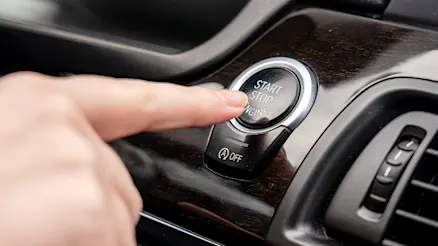
Why does my car behave differently when I start it in the morning?
Ever notice your car feels different in the morning? Learn why cold starts affect performance and how to keep your car running smoothly year-round.
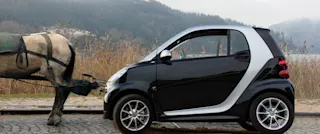

Ever notice your car feels different in the morning? Learn why cold starts affect performance and how to keep your car running smoothly year-round.

Regularly checking your tyre pressure is crucial to your vehicle’s safety, fuel economy and optimal driving.
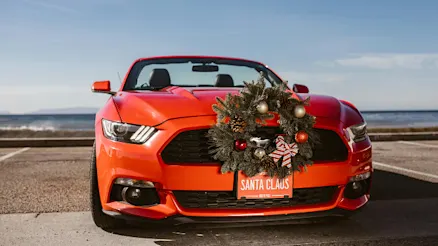
Looking for the perfect gift for the car enthusiast in your life? Carma’s experts have you covered.
Which ‘facts’ are actually fiction when it comes to your car? After recently looking at EV myths, we wanted to take a closer look at some of Australia’s broader car myths and misconceptions.
So here they are - seven of the most common myths about cars, debunked.
Debunked: Generally, stick to your car’s recommended service schedule.
This advice has been around for years. Yes, regular oil changes are essential for a healthy engine. But thanks to modern synthetic oils, most cars don’t require oil changes nearly as frequently. Lots of recommended oil change intervals are 10,000 km, 15,000 km or more.
In most cases, simply follow the recommended intervals in your car’s service manual using the recommended oil type. This also helps to maintain a full service history, which can be handy when it comes to selling or trading in your vehicle.
Debunked: While this used to be the case, it’s no longer necessary for modern engines.
It’s true that older car engines with carburettors could use a few minutes of idling. This allowed the oil to properly lubricate the engine after it had settled while the choke control created the right fuel-air mix for a cold start. Idling also helped engine components warm up to the optimal operating temperature.
Given that car engines now use fuel injection, warm-up time is no longer needed. Synthetic oils can now re-lubricate the engine in as little as 20-30 seconds, and the most efficient way to get your car up to its ideal temp is to simply start driving.
So if you have a vintage car with a carby, it could be worth taking a few minutes to dawdle. If not, you can pretty much get going.
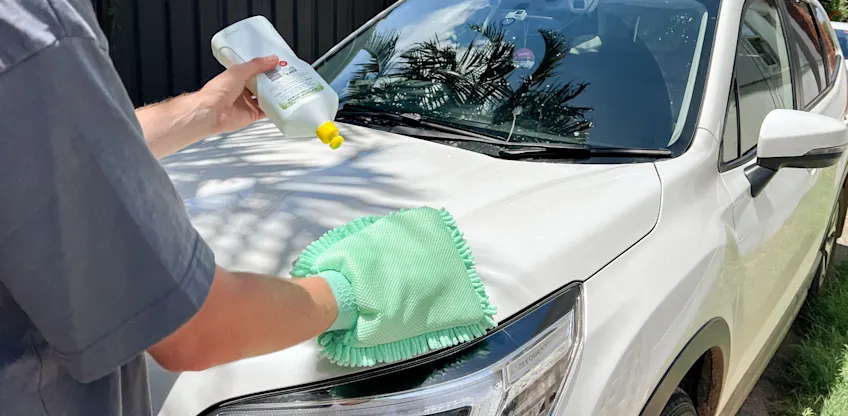
Debunked: While there’s nothing stopping you from using some Morning Fresh on your Mazda, it’s probably not worth it.
Dishwashing detergent is formulated to strip away stubborn grime and oils from dishes and plates. Unfortunately, this means it also has the potential to strip away protective coatings on your vehicle like waxes and sealants. Car paint that’s poorly protected can fade, oxidise or flake, leaving you with anything but a flawless finish.
In contrast, dedicated car wash is formulated to gently remove dirt and debris without compromising ceramic coatings or sealants, and in some cases also adds a protective element as you rinse.
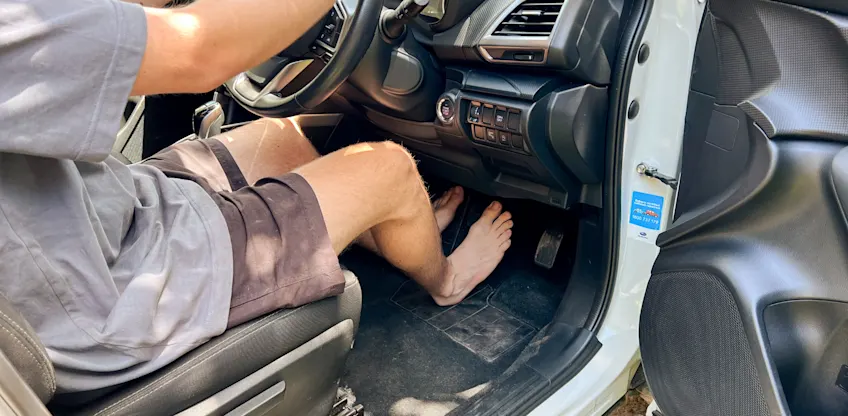
Debunked: It’s technically not illegal, but take care all the same.
At the time of writing no Australian state or territory has a written law to directly ban barefoot driving. There’s also no law dictating which footwear you must wear while driving.
But before you zoom away minus shoes or in double-pluggers, remember: you could still be held responsible if you cause an accident and it’s found your footwear - or lack thereof - played a part. A loose strap or slip could be all it takes to make an error, and unsecured footwear in the driver’s footwell could become lodged behind the pedals. So common sense prevails on this one.
Debunked: Rather than speed, horsepower measures the rate of work done by a motor.
Back in the 1700s, the Scottish engineer James Watt designed some improvements to the steam engine and needed a way to communicate the power increase. He decided to compare the output of steam engines with the other prime mover of the day: heavy horses.
When you hear about a car’s horsepower (or hp) this isn’t referring to speed, but rather the engine's ability to maintain speed and efficiency as the car drives.
This depends whether we’re talking imperial or metric, as the details used to calculate each are different. One mechanical (imperial) horsepower is around 745.7 watts, while one metric horsepower sits at around 735.5 watts.
Of course, given we measure things by the metric system in Australia we often refer to power output in kilowatts - a unit named after our friend James Watt.
Probably more than one horsepower! Watt deemed one horsepower as the rate of work a draft horse could achieve over a day. In years since it was calculated that a horse could achieve around 14.9 horsepower at its fastest. And in 2023, YouTubers used a modified dyno to calculate a draft horse’s horsepower at 5.7 hp.
Debunked: Size doesn’t always correlate with safety.
You needn’t look far to find exceptions to this myth. Some small new cars with five-star ANCAP safety ratings include certain models of the Mini Cooper, Hyundai i30 and the zippy Volkswagen Polo. Meanwhile, some larger SUVs and vans have scored as low as one or even zero stars.
So how do you find a safe car? Whether shopping for a used car or new, try searching the make, model and year on the ANCAP website. ANCAP provides independent ratings based on key safety aspects for occupants, road users and safety assist technologies. Every car has different safety strengths and weaknesses, so it’s worth checking.
On Carma, it’s easy to search for second-hand cars in Sydney by ANCAP safety rating. Check out these five-star models that are ready for delivery or pickup.
Debunked: To be fair, this myth can sometimes be true. But with Carma’s online search you can easily find near-new used cars in Australia and enjoy the buying process with peace of mind.
Carma has a thorough pre-sale checklist before each car is listed online. You get a 3-month warranty, plus 7 days to return the car if you don’t love it.
Ready to find your next ride? Start exploring second-hand cars in Sydney.